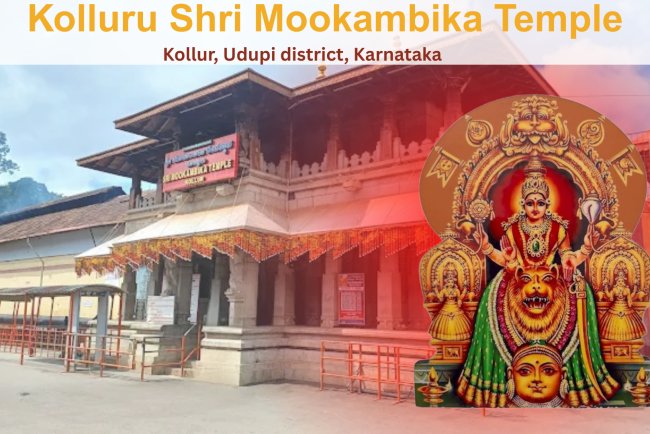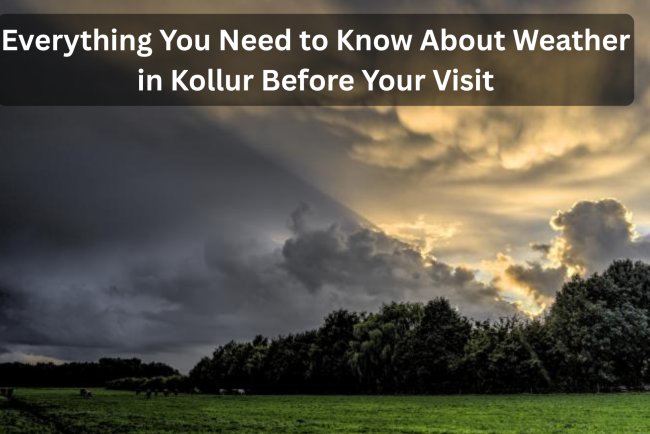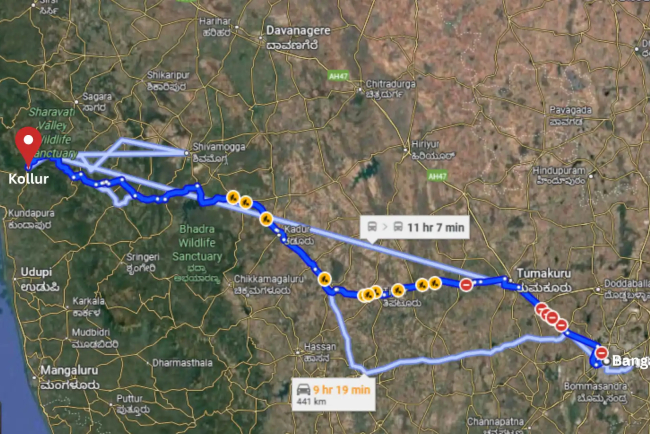The Ultimate Travel Guide to Kollur – Resorts, Beaches, Trekking & More
Plan a trip to Kollur: best hotels & resorts, Kodachadri trek/jeep, Maravanthe beach, backwater boating, food & tips. Temple timings + nearby attractions.
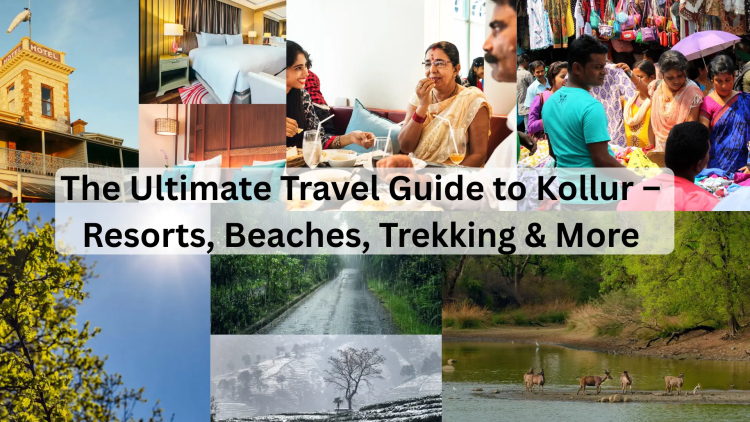
Kollur sits in Karnataka’s Udupi district, tucked into the Western Ghats a lush corridor of forests, rivers and winding hill roads. Known foremost for the revered Kollur Mookambika Temple, this guide focuses on the travel side: serene beaches, misty treks and easygoing stays. You’ll learn how to reach Kollur, when to visit, and where to book hotels in Kollur, riverside homestays and nature-friendly resorts. We’ll also cover Kodachadri hiking and jeep rides, Souparnika river walks, hidden waterfalls, coastal food, culture and shopping, plus ready itineraries for families, backpackers and wellness seekers. Expect practical tips, local maps, budgets, and photography spots too.
About Kollur
Kollur, a hill-town in Karnataka’s Udupi district, rests at the base of Kodachadri in the Western Ghats. Surrounded by rivers, forests, and close to the Arabian Sea, it offers a rare mix of mountains, beaches, and waterfalls. Best known for the Mookambika Temple, Kollur also draws nature lovers with treks to Kodachadri, waterfalls like Hidlumane and Arasinagundi, and coastal escapes at Maravanthe and Byndoor. Families, pilgrims, backpackers, and wellness seekers alike find comfort in its homestays, vegetarian cuisine, Ayurveda, and yoga. A compact, welcoming town, Kollur blends spirituality with laid-back travel an ideal base to explore the Western Ghats and Karnataka’s coast.
How to Reach Kollur
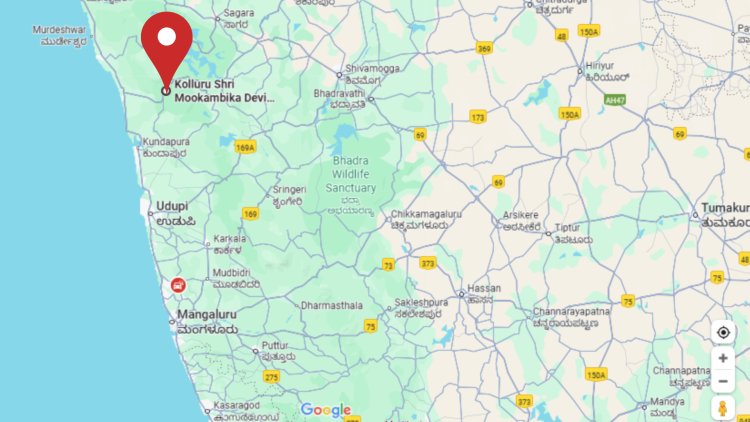
By Road (bus, cab, self-drive)
- From Udupi (70–80 km): Frequent coastal buses towards Kundapur/Byndoor with onward connections to Kollur; cabs take ~2–2.5 hrs depending on ghats.
- From Mangalore (125–150 km): Regular intercity buses to Kundapur/Byndoor + change to Kollur; self-drive via NH66 (coast) or via Karkala–Agumbe for a scenic Western Ghats route.
- From Bangalore (420–470 km): Overnight buses run to Kollur/Byndoor/Kundapur. Driving routes:
- Shivamogga–Hosanagara–Nagara–Kollur (Malnad, fewer coastal detours).
- Hassan–Sakleshpur–Mangaluru–NH66 (fast highways; more traffic).
- Tips: Mountain stretches get fog/rain in monsoon—start early, keep fuel topped up, and confirm homestay/jeep pickups beforehand.
By Train (nearest stations: Byndoor, Kundapur)
- Byndoor (Mookambika Road, 25–30 km): On the Konkan Railway; many north–south trains stop here. Autos/cabs and KSRTC/private buses connect to Kollur.
- Kundapur (35–45 km): Offers more train options and is suitable for late arrivals with reliable road links to Kollur.
- Bhatkal (40–50 km): Consider this as an alternate stop if Byndoor/Kundapur options don’t fit your schedule.
- Tips: Pre-book a cab from the station during weekends/holiday seasons, or ask your hotel/resort in Kollur to arrange pickup.
By Air (nearest: Mangalore International Airport)
- Mangalore (IXE, 140–160 km): Daily flights from major Indian cities; onward travel by pre-booked taxi (4–5 hrs) or airport bus to Udupi/Kundapur and then to Kollur.
- Practicalities: Night driving on ghats is doable but slower; if landing late, consider a halt at Udupi/Kundapur or a beach resort near Maravanthe/Byndoor, then head to Kollur the next morning.
Local mobility
- Kollur town is walkable; autos are easy to hail. Kodachadri summit requires a guided trek or licensed jeep from Nittur/Kattinahole book locally for current trail/jeep conditions.
Accommodation in Kollur – Hotels, Resorts & Stays
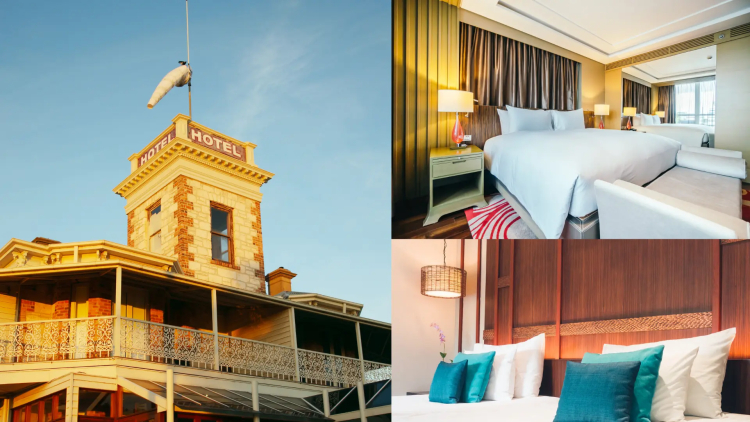
1. Budget Hotels
If you want simple, walk-to-everywhere convenience, budget hotels in Kollur cluster around the bus stand, Bazaar Road and the approach to the town centre. Expect compact non-AC or AC rooms with clean linen, hot water (often via geyser/solar), and basic amenities like TV and limited parking. Many properties keep early check-in options for overnight bus arrivals and offer luggage holds for day trips to Kodachadri or Maravanthe. On-site dining is usually a vegetarian tiffin counter or a small Udupi-style mess; some places arrange auto/cab pickups to the Souparnika riverside or jeep points. Weekday walk-ins are feasible outside peak season; book ahead for weekends and holidays.
2. Mid-Range Hotels
Mid-range stays suit families who want more space and predictability without leaving town. Look for newer lodges and 2–3-star hotels along the state highway approach and temple-ward lanes, offering elevators, larger AC rooms, family suites, room service, in-house veg restaurants, and better power backup. Front desks can arrange fixed-fare station pickups from Byndoor/Kundapur and licensed jeeps to Kodachadri, plus an early breakfast for sunrise plans. Many are a short auto ride from Souparnika ghats and riverside walk spots, and provide travel desks for Kundapur backwater boating or Maravanthe sunset runs. Rates trend moderately on weekdays and climb on long weekends and the Oct–Feb high season.
3. Resorts in Kollur & Surroundings
Nature-forward resorts appear in the 8–25 km belt toward Nittur, Kattinahole, Valur and the Kodachadri foothills. Expect cottages or villas set in spice/areca estates with open decks, lawns for campfires, and activity lists—guided birding, short forest walks, kids’ play lawns, and sometimes a small pool or Ayurveda room. These stays are popular with groups who want a quiet base plus arranged jeep transfers to Kodachadri or waterfall trails like Hidlumane/Arasinagundi. Evenings are about slow meals, stargazing and board games rather than nightlife. Please confirm the last-mile road conditions during the monsoon season and inquire about generator backup and leech socks, especially if you plan to take estate strolls during peak rains.
4. Beach Resorts (Byndoor, Kundapur, Maravanthe)
If you want sea air with your Ghats, pair Kollur with a beach resort 25–45 km away. Byndoor and Kundapur offer full-service resorts with sea-facing rooms, sunset decks, pools, kids’ zones, and seasonal water sports. Maravanthe is the classic postcard strip. Arabian Sea on one side and the Suparnika/Souparnika backwater on the other, great for golden-hour photography and easy beach time after a temple/trek day. These properties typically have multi-cuisine restaurants (with strong coastal menus), curated day trips to Kollur, Murudeshwar or Udupi, and spa/wellness add-ons. Beach resorts book out for December–February, long weekends and wedding blocks—reserve early for best categories and rates.
5. Riverside & Forest Homestays
Homestays around Kollur, Nittur, and the Hosanagara–Malnad belt blend warm hosts, local food and greenery. Rooms range from simple doubles to family annexes; many include two hearty meals (veg Udupi/Malnad thalis with seasonal specials like neer dosa, jackfruit dishes, fish curries in coastal-leaning kitchens). Expect verandas that open to areca gardens, river dips at marked safe spots, and easy birdwatching—kingfishers, drongos, Malabar squirrels in the canopy. Ask about monsoon access, parking, and power backup; carry insect protection for dusk hours. These are the best values for slow mornings, reading by the Souparnika, and low-key evenings under a sky dense with stars.
Food & Dining in Kollur
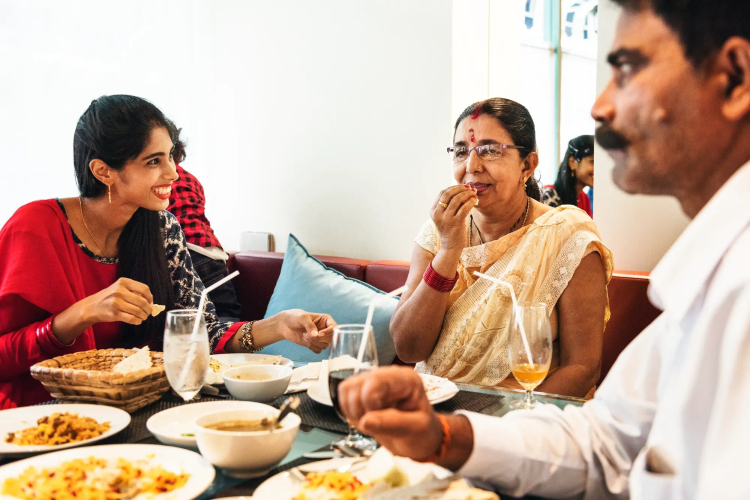
Kollur’s food scene is simple, fresh, and very Udupi-style. Expect vegetarian thalis with rice, sambar, rasam, vegetable palya, kosambari, curd, and a sweet served on steel plates or banana leaves at no-frills eateries near the bus stand and market lanes. Breakfast is classic South Indian: soft idlis, crisp masala dosa, poori-sagu and upma, finished with strong filter coffee. Around weekends and the Oct–Feb season, popular tiffin centres extend hours to handle early trekkers and late darshan crowds.
For quick meals, tiffin counters are your best bet fast-moving menus, pocket-friendly prices, and consistent taste. They’re ideal before a Kodachadri jeep ride or as a post-temple pit stop. Many places pack dosas and lemon rice for on-the-go nibbling; tea stalls keep hot chai and bondas ready through misty evenings. Do carry small change or UPI-ready phones tiny joints may be cash-lean, but most now accept digital payments.
Inside hotels and resorts in Kollur, you’ll find multi-cuisine restaurants with North Indian staples, simple Chinese mains, and continental comfort food (soups, salads, pasta) alongside South Indian meals. This works well for mixed-age families and groups with varied preferences. Resorts also accommodate early breakfast requests for sunrise plans and can prepare light packed lunches for day trips to waterfalls or beaches.
If you’re craving coastal specialities, drive to Byndoor, Kundapur or Maravanthe (25–45 km) for neer dosa with prawns gassi, kori rotti with chicken curry, kane (ladyfish) fry, anjal (seer) tawa fry, and crab masala. These towns balance spice with coconut and tamarind, and many sea-view restaurants time their menus to sunset. Vegetarians won't feel left out neer dosa, jackfruit kadubu, patrode (colocasia leaf rolls) and seasonal Malnad dishes are common across the belt.
Nature & Adventure Around Kollur
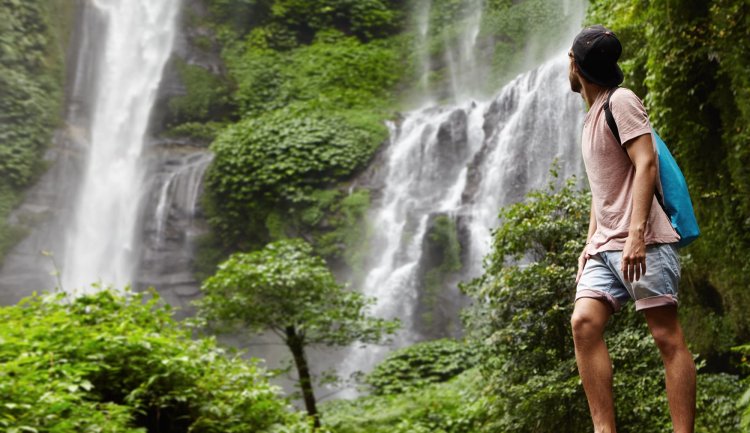
Kodachadri Hills – trek or licensed jeep safari
The Western Ghats rise abruptly behind Kollur, and Kodachadri (1,343 m) is the star. Fit hikers take the Hidlumane trail—a steep, rewarding route over rock slabs and ferny forest to multi-tiered falls and shola grasslands near the top. Those short on time (or travelling with kids/elderly) can hire licensed jeeps from Kattinahole/Nittur, a bumpy 45–60-minute climb through Mookambika Wildlife Sanctuary. Start early for cool weather and a quieter summit; on clear days, the Arabian Sea glints on the horizon at sunset. Sanctuary check-posts may collect entry/vehicle fees; jeeps typically return before dusk, so confirm last-ride timings with operators the day prior. Wear grippy shoes, carry rain protection during monsoons, and pack away all trash.
Souparnika River – quiet ghats, bird calls, easy walks
Skirting the town, the Souparnika River offers soft adventure—misty morning walks, riverbank picnics, and birdwatching (kingfishers, egrets, drongos). Ask locals or your host about safe, designated access points; currents can be strong after heavy rain. Evenings bring glassy reflections and a chorus of cicadas in the bordering groves. Avoid plastic, keep noise low, and skip bathing during peak monsoon; this is a wildlife corridor as much as a leisure spot.
Arasinagundi & Hidlumane Waterfalls – monsoon drama
For waterfall chasers, Hidlumane Falls sits on the Kodachadri trekking line: a set of cascades reached via plantation paths and a short but steep forest pull. In full monsoon (June–September), the torrent is spectacular but slippery. Post-monsoon (October–December) for safer flow and clear pools. Arasinagundi Falls, located closer to Kollur in thick forest, requires a guided hike on leaf-littered trails, which can be hazardous due to leech zones in rainy months. Both demand good footwear, a small first-aid kit, and respect for changing weather—cloudbursts are common.
Maravanthe Beach – river on one side, sea on the other
About an hour's drive from Kollur lies the iconic Maravanthe Beach, where the highway threads between the Arabian Sea and the tranquil Souparnika backwaters. It’s one of the most photogenic places to visit near Kollur: golden-hour colour, long shutter river reflections, and occasional traditional boats sliding past. Swim only where conditions are calm and locals consider it safe; tides and rip currents vary seasonally. Pair a Maravanthe sunset with a seafood dinner in Byndoor/Kundapur, then drive back to Kollur under a sky crowded with stars.
Boating & kayaking in Kundapur backwaters – slowwater safari
South of Kollur, the Kundapur backwaters form a lacework of creeks and the Panchagangavali river mouth. Local operators run kayak rentals and boat cruises through mangrove-edged channels—perfect for families and first-timers who prefer calm water to surf. Expect herons, cormorants and occasional brahminy kites, with glassy conditions around sunrise and sunset. Wear a life jacket, keep phones in dry bags, and choose licensed outfits that provide you with tide and weather updates. Many beach resorts in Byndoor/Kundapur can book slots or bundle a cruise into day-trip plans from Kollur.
Quick planning tips
- Monsoon magnifies beauty and risk—check trail/jeep status the day you go.
- Waterproof your pack; carry salt or spray for leeches on wet trails.
- Prefer local guides for Arasinagundi/Hidlumane; signage can be sparse.
- Keep cash/UPI ready for entry points, jeeps, and roadside stalls.
Nearby Attractions Beyond Kollur
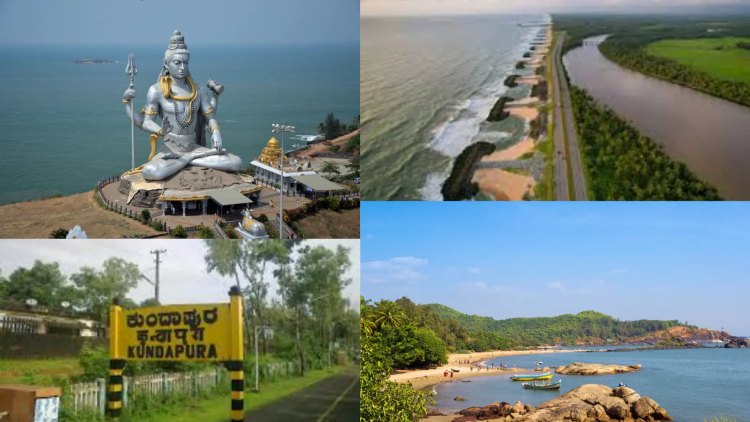
1. Murudeshwar (beach + views + water activities)
About 60–70 km from Kollur, Murudeshwar pairs a sweeping beach with a towering Shiva statue and a striking gopuram that offers panoramic views (via elevator tickets sold at the base). Families love the broad sandy arc and easy photo spots; active travellers can scout seasonal boat rides and light water activities along the promenade. A classic day plan is to leave Kollur by late morning, pause for sunset at the beach, dine at a sea-facing restaurant, and return via the coast.
2. Udupi (cuisine + culture + coastal detours)
Roughly 70–80 km South, Udupi is a gentle step into temple neighbourhoods, tiffin history, and quiet lanes. After exploring the old town and its vegetarian eateries, drive to Malpe Beach for a breezy evening; ferry services to St. Mary’s Island operate seasonally (check locally for timings and sea conditions). Foodies can spend an entire afternoon grazing on dosa varieties and traditional sweets before looping back to Kollur.
3. Kundapur & Byndoor (resorts + backwaters + beaches)
Within 25–45 km, the Kundapur–Byndoor belt is where many travellers base themselves for beach time and calm-water boating. Expect mangrove-lined backwaters, kayak rentals, and family-friendly beach resorts with pools, kids’ zones and sunset decks. It’s the easiest add-on to a Kollur stay: do a Kodachadri morning, then slide down to a seaside dinner and stargaze before driving back.
4. Maravanthe (river–sea postcard)
North of Kundapur, Maravanthe is the famed ribbon where the highway runs with the Arabian Sea on one side and backwaters on the other. It’s a photographer’s dream near sunset and a great pit stop on any coastal loop. Swim only when locals deem conditions safe; currents vary with season and tide. Combine Maravanthe with either a Kundapur seafood lunch or a Murudeshwar evening stroll.
5. Gokarna (hippie beaches & light treks)
Farther north, Gokarna sits about 130–160 km from Kollur, best done as a very early start day trip or an overnight. The beach-to-beach cliff path (Om–Kudle–Half Moon–Paradise) suits fit walkers; cafés and simple stays lend the place a mellow feel. Consider pairing Gokarna with Murudeshwar on a two-day coastal extension if you have time.
6. Agumbe Rainforest (sunset point & biodiversity)
To the east, Agumbe—often called the “Cherrapunji of the South” is 60–80 km by winding ghats. Famous for its fiery sunset point, it also features a thick rainforest, supports herpetology research, and is home to monsoon-fed streams. Roads can be misty and slick in the rain; start early, drive slowly, and consult locals for the latest on viewpoints and short forest walks.
Easy day-trip clusters
- Coast loop: Kollur → Kundapur/Maravanthe → Murudeshwar → return.
- Food & culture: Kollur → Udupi town & Malpe → coastal dinner → return.
- Hill & forest: Early Kodachadri or waterfalls → lazy backwater boat at Kundapur by dusk.
These hubs let you sample beaches, backwaters, and rainforest without shifting base—perfect if Kollur is your quiet anchor in the Western Ghats.
Weather in Kollur – Best Time to Visit
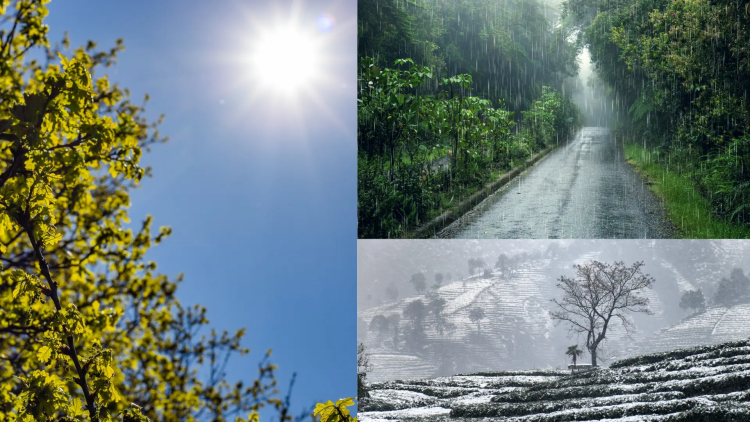
Overall pattern (Western Ghats + coast influence)
- Tropical, humid year-round; temperatures usually 20–34°C.
- Rains arrive with the South-West monsoon (June–Sept); the rest of the year is drier.
- Beach belts (Byndoor/Maravanthe) feel warmer; hill/forest belts (Kodachadri side) feel cooler.
Summer (March–May) – Hot & humid, fewer tourists
- Day temps 30–34°C; sultry afternoons with occasional pre-monsoon showers.
- Best for: short morning treks, Souparnika riverside walks, sunset drives to Maravanthe.
- Pack: light cottons, SPF, electrolytes; pick AC rooms and early starts.
Monsoon (June–September) – Lush greenery, dramatic waterfalls
- Frequent heavy showers; forests turn neon-green, streams brim, and leeches are active.
- Pros: Hidlumane/Arasinagundi Falls at their best, moody photography, and low hotel rates.
- Cons: slippery trails, occasional road/jeep restrictions on Kodachadri; slower travel.
- Pack: waterproofs, anti-leech measures, dry bags; check daily trail/jeep status.
Winter/Post-monsoon (October–February) – Peak season, best overall
- Pleasant 20–30°C, clearer skies, calmer seas; ideal for families and multi-activity trips.
- Best for: Kodachadri trek/jeep sunsets, Kundapur backwater kayaking, long evenings on the beach.
- Practical: highest demand for hotels in Kollur and nearby beach resorts book early, especially around holidays and regional festivals.
Local Culture & Lifestyle
Kollur sits at a gentle crossroads between Malnad hills and the Karavali coast, so you’ll hear a mix of Kannada, Tulu, and Konkani in markets and tea stalls. Days start early: mist lifts off areca and coconut groves, shop shutters rise, and buses fan out toward Kundapur, Byndoor, and the Kodachadri foothills. The pace is unhurried and neighbourly auto drivers know shortcuts, café owners remember regulars, and most directions include a landmark like a riverside ghat or a bend of the Souparnika.
Hospitality here is straightforward and warm. Typical plates follow Udupi-style vegetarian rhythms—steamed rice, sambar, vegetable palya, curd, and a sweet—while coastal influences (neer dosa, kori rotti, fish curries) appear in nearby towns. In the arts, Yakshagana troupes tour the region in season, staging overnight dance-dramas that blend percussion, dialogue, and vivid costumes; even a brief glimpse feels like a time tunnel into coastal folklore.
Work life reflects the landscape: areca, coconut, and spice cultivation in the hills; fishing and boat work along the shore; small shops, homestays, and transport services connecting the two. Monsoon shapes routines—umbrellas and raincoats by every doorway, leech-salt jars on verandas, and a collective patience for drenched afternoons.
Shopping in Kollur & Surroundings
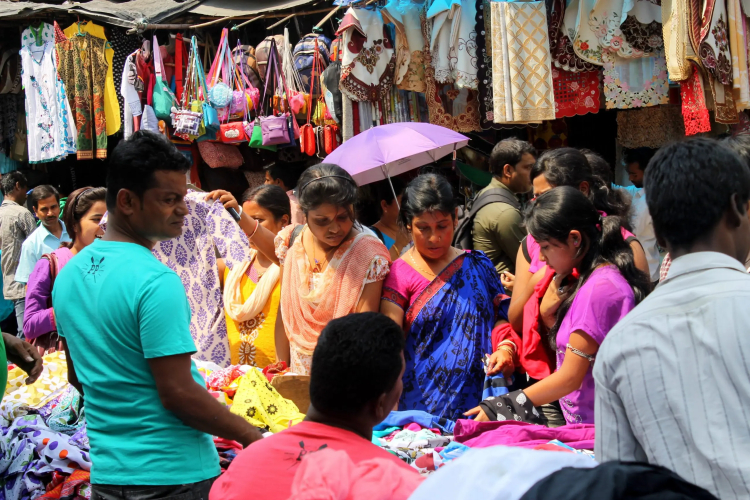
Kollur itself is a small market town, so shopping is about simple, local buys rather than big malls. Around the bus stand and bazaar lanes, you'll find souvenir counters with framed landscapes, small brass diyas, prayer beads, and fridge magnets easy keepsakes for friends. Step into general stores for local snacks and hill produce; mornings see fresh bananas, tender coconuts, and seasonal roots stacked outside in neat heaps.
For handicrafts, consider expanding your search to Kundapur and Udupi. Roadside cooperatives and craft outlets stock wooden toys and carvings, coconut-shell curios, and areca-leaf ware lightweight, eco-friendly plates ideal for picnics. Ask for pieces made by local self-help groups (you’ll often see SHG tags); the finish is rustic but charming. In weekly haats, look for hand-woven baskets and spice pouches black pepper, cardamom, and forest honey sold in modest glass bottles.
Travellers keen on wellness can pick up Ayurvedic balms, herbal oils, and soap bars at pharmacies and resort boutiques; buy sealed packs, check dates, and cushion bottles in clothing for the ride back. Foodies shouldn’t miss coastal cashews (try small packs of plain, roasted, or masala), jackfruit chips, and neer-dose mixes from Udupi grocers; in Byndoor/Kundapur, you'll also find spice blends for prawn gassi and kori rotti gravies.
Kollur for Families & Groups
Kollur works beautifully for multi-age trips. In town, hotels in Kollur offer family rooms, elevators, early check-in after overnight buses, and on-call autos. For more space, pick resorts in Kollur’s outskirts or riverside/estate homestays—you’ll get lawns for kids, hammocks, campfire corners, and hosts who can fix simple meals at child-friendly times. Ask for interconnected rooms, extra bedding, high chairs, and an early breakfast if you're chasing a Kodachadri sunrise.
For groups split between trekkers and relaxers, plan licensed jeep safaris to the Kodachadri summit while elders and toddlers enjoy a souparnika-side picnic or a slow farm walk. Resorts can arrange badminton, board games, and short nature trails; beach belts like Byndoor/Maravanthe (25–45 km) add pool time, sand play, and safe sunset viewing from decks. If you try Kundapur backwater boating, insist on life jackets and calm-water slots near sunrise/sunset.
Kid-friendly picnic spots include marked river ghats (check flow before stepping in), estate edges with shaded seating, and beach viewpoints with railings. Avoid slippery rocks in monsoon, pack crocs or grippy sandals, and keep a small kit: ORS, band-aids, mosquito roll-on, and a quick-dry towel. Forest etiquette matters—no loud music, no feeding monkeys, and always carry back trash.
Easy 2-day family plan
- Day 1: Arrive and settle → Souparnika riverside walk → Early veg thali in town → Golden hour at Maravanthe → Return for campfire stories.
- Day 2: Early jeep to Kodachadri (non-trekkers: resort play area/short trail) → Brunch back at stay → Late-afternoon backwater cruise near Kundapur → Seafood/veg dinner
Kollur in Monsoon – A Different Experience
When the South-West monsoon rolls in (June–September), Kollur swaps blue skies for silver rain-curtains, low clouds, and mossy greens. Forest trails darken, streams sing louder, and the Souparnika River swells into mirror-still backwaters between showers. Waterfalls Hidlumane and Arasinagundi are at their cinematic best, with spray hanging in the air and fern banks glowing neon. Photographers love the diffused light, mist curls on estate roads, and the drama of Maravanthe Beach under fast-changing skies.
Travel slows and that’s part of the charm. Expect leechy paths, slippery rocks, and occasional route checks for the Kodachadri jeep track; operators may pause rides during cloudbursts. Trekkers should carry ponchos, anti-leech measures, dry bags, and spare socks; families can trade steep hikes for tea-house hopping, riverside viewpoints, and short guided walks between showers. Resorts feel extra cosy now campfires under covered sit-outs, spice-scented kitchens, and the pleasure of listening to rain on tiled roofs.
Road sense matters: start early, avoid night ghats in heavy rain, and keep buffers between plans. Sea conditions vary, so swim only where locals deem it safe; backwater kayaking is a gentler alternative when tides and wind behave. With patience and a flexible plan, monsoon reveals Kollur’s most intimate, rainforest mood—fewer crowds, lower tariffs, and a landscape that feels newly washed, hour after hour.
Kollur’s History & Heritage
- Malnad–Karavali crossroads: Kollur sits where Western Ghats hill paths meet coastal trade belts. For centuries, ghat tracks linked interior estates to Arabian Sea ports like Kundapur, Basrur, and Bhatkal, moving pepper, areca nut, rice, and forest produce.
- Souparnika valley settlements: Small agrarian hamlets grew along the Souparnika River, with paddy fields, areca gardens, and laterite-and-tile homes. Traditional courtyards, sloped red-tile roofs, and rain-ready eaves reflect very high monsoon rainfall.
- Coastal trade influences: Arab and later European (Portuguese-era) maritime links shaped foodways (coconut, spice-forward gravies), boat-building styles on nearby creeks, and the spread of roofing tiles and carpentry techniques into the hills via pack routes.
- Cultural confluence: Languages Kannada, Tulu, and Konkani overlap here. Folk arts such as Yakshagana tour the region, while farm calendars, areca processing, and monsoon customs bind hill and coast communities into a shared cultural rhythm.
- Hill hospitality tradition: Old choultries (travellers’ rest houses), roadside tea-houses, and weekly haats served pilgrims, porters, and traders crossing the ghats habits that evolved into today’s lodges, homestays, and estate stays.
- Sanctuary & conservation era: Forested ridges around Kollur came under formal protection in the late 20th century, safeguarding shola grasslands, evergreen tracts, and wildlife corridors—one reason trails, jeep routes, and waterfalls are now managed with entry checks and local guides.
- Modern connectivity & tourism: The rise of NH66, improved ghat roads, and Konkan Railway access via Byndoor/Kundapur opened the area to weekenders and family travellers. Today, Kollur balances its quiet hill-town character with easy coastal add-ons beaches, backwaters, and seafood stops within an hour’s drive.
Wildlife & Eco-Tourism Near Kollur
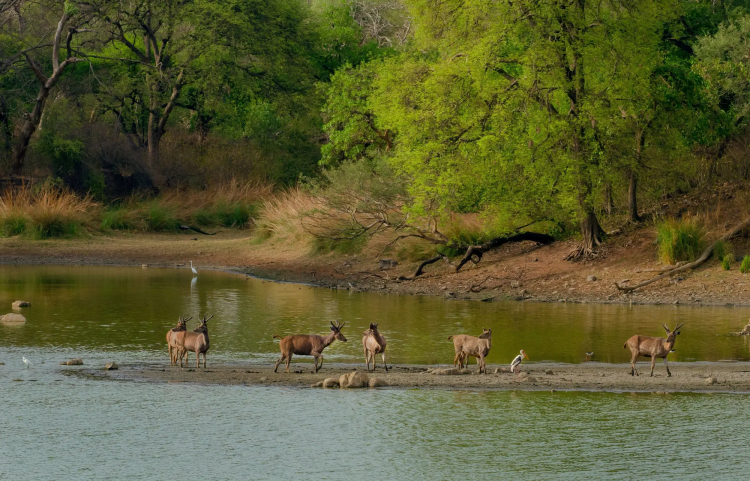
The Mookambika Wildlife Sanctuary wraps Kollur in evergreen and semi-evergreen forest, shola grasslands, and riparian belts along the Souparnika River a classic Western Ghats mosaic. Quiet dawns bring movement on the canopy: Malabar giant squirrels, langurs, and bonnet macaques near fruiting trees; on lucky days, you might glimpse barking deer crossing estate edges. Birders can expect kingfishers, drongos, sunbirds, woodpeckers, hornbills, and in deeper forest forest jewels like the Malabar trogon. Snakes and amphibians are part of the ecology; watch your step, especially during the monsoon season.
Best low-impact experiences
- Riverside birding: Scan Souparnika bends at sunrise/sunset for kingfishers, egrets, and brahminy kites; keep voices low and give nesting trees a wide berth.
- Guided short walks: Ask resorts/homestays for local naturalists who know safe paths, leech-prone patches, and current animal movement.
- Estate edges: Areca/spice plantations act as soft wildlife corridors great for butterflies, bulbuls, and squirrel sightings without entering the core forest.
- Backwater cruises (Kundapur): Calm-water routes double as birding drifts through mangrove-lined channels.
Eco-stays & organic experiences
Several riverside homestays and estate retreats near Kollur practice rainwater harvesting, waste segregation, and farm-to-table menus. Guests can join spice garden walks, try areca/coconut farm activities, or learn about composting and native tree planting. These light-touch programs suit families and first-time nature travellers.
Sanctuary etiquette & safety
- Stay on marked trails and obey forest gate timings; night walks inside wildlife areas are typically restricted.
- In monsoon, wear leech guards and grippy footwear; carry a small first-aid kit and dry bag.
- No feeding or approaching animals; keep a 10–15 m distance when possible.
- Pack out all trash; avoid single-use plastics; use reef-safe sunscreen if you’ll kayak or wade.
- Hire licensed jeeps/guides for Kodachadri and check daily weather/route status.
Handled with care, Kollur’s wild side is gentle, close-up, and memorable—perfect for beginners discovering the Western Ghats.
Ayurveda & Wellness Retreats in Kollur
Kollur’s slow-travel rhythm makes it a natural fit for wellness. Many resorts in Kollur and riverside homestays maintain compact Ayurveda rooms with trained therapists, offering recovery after treks and long drives. Expect classic treatments like abhyanga (full-body oil massage), shirodhara, steam/sauna, and localised therapies for stiff calves or shoulders. Book evening slots post-Kodachadri, request same-gender therapists if preferred, and note that herbal oils can stain clothing carry a spare set.
For deeper programs, Panchakarma is best handled at speciality centres in Kundapur/Udupi (35–80 km). These clinics typically include a doctor consult, pulse diagnosis, and diet guidance, and may ask for a 3–7 day commitment with rest time. Pre-book, share medical history (BP, diabetes, recent injuries), and plan light sightseeing around treatment days. Pairing a beach stay at Byndoor/Maravanthe with a clinic day in Udupi is a practical way to balance rest, salt air, and gentle walks.
Nature resorts near the Souparnika River often host yoga and meditation on open decks sunrise pranayama, forest-edge asanas, and short mindfulness sessions at dusk. Weekend retreat formats work well for families: parents attend guided classes while kids join nature walks or art corners. In the monsoon, sessions shift to covered verandas; carry a mat, towel, and grippy footwear.
Photography & Instagram Spots in Kollur
- Sunrise at Kodachadri peak: Golden light over shola grasslands, cloud inversions on lucky mornings; arrive pre-dawn by trek or licensed jeep and carry a headlamp.
- Sunset at Maravanthe Beach: Iconic river–sea ribbon; shoot wide for highway leading lines or low for wave textures. Long-exposure frames glow after blue hour.
- Souparnika River ghats: Mirror-still reflections at dawn; frame fishing nets, coconut fronds and bird silhouettes (kingfishers, egrets). Avoid stepping onto slippery stones in the monsoon.
- Hidlumane & Arasinagundi Falls: Use fast shutters for spray and ND filters for silky water; pack rain covers and watch for leechy patches. Mid-morning beams through foliage are magic.
- Estate lanes near Nittur/Kattinahole: Misty areca and spice rows, red-tile roofs, laterite walls—great for portrait backdrops. Ask permission before photographing private homes.
- Kundapur backwaters by kayak/boat: Low-angle POV of mangrove tunnels and brahminy kites at golden hour; keep phones in dry bags and respect wake-free zones.
Nightlife & Evening Activities in Kollur
Quiet town (no pubs/nightclubs)
Evenings are calm shops wind down early and streets go quiet after dinner. Expect stargazy skies, the hum of cicadas, and the odd late tea stall. If you want a walk, stick to the main lanes or river ghats; carry a torch and keep noise low.
Resort-based entertainment (campfire, music, stargazing)
Most action happens inside resorts: covered campfires in monsoon, unplugged music, board games, and skywatching from lawns or decks. Ask for simple telescope or sky app sessions for kids, and request early dinners so families can wind down without rushing between activities.
Night jeep safaris in Kodachadri
Some operators organise dusk–early night jeep runs on permitted tracks when weather and rules allow. These are bumpy and strictly schedule-bound—book through your stay, confirm gate timings, and dress warm. Avoid loud music or torches; the focus is on forest mood, not speed or wildlife chasing.
Beachside dinners at Byndoor & Maravanthe
If you're staying near the coast (25–45 km), head to sea-facing restaurants for grilled seafood, coastal thalis, and sunset-to-blue-hour views. Choose well-lit spots with safe parking; tides and winds change nightly. After dinner, the drive back to Kollur is serene if you keep your speed conservative.
Festivals & Events in Kollur
Kollur’s calendar is quieter than the coast, but the region lights up with folk and seasonal events you can easily plug into.
1. Local folk festivals with Yakshagana performances:
Winter and post-harvest months see Yakshagana troupes touring village grounds and school courtyards. Shows begin late evening and run past midnight music, dialogue, and dazzling costumes in an open-air setting. Ask homestay hosts about nearby schedules; bring a light shawl and a seat mat.
2. Monsoon cultural festivals in the Udupi region:
Between July–September, surrounding towns host rain-season fairs, farm-themed melas, and food pop-ups showcasing jackfruit, wild greens, and traditional snacks. Expect craft stalls, folk percussion, and short cultural pieces; rains add mood, so carry a poncho.
3. Beach festivals & water-sports weekends (Byndoor, Kundapur, Maravanthe):
Through Oct–Feb, beach belts run photography walks, sand-art corners for kids, and kayak/SUP meetups on calm backwater days. Resorts sometimes curate sunset music sessions and local seafood tastings. Check resort boards and community pages for dates; book ahead on long weekends.
Conclusion
Kollur rewards slow travellers and weekenders alike with a rare blend of Western Ghats greenery and easy coastal access. Base yourself in town for walkable stays and Souparnika-side strolls, or choose estates and resorts in Kollur for lawns, campfires, and jeep pickups to Kodachadri. When the hills are done, slide to Byndoor, Kundapur, or Maravanthe for sunsets, seafood, and calm-water kayaking. The year divides neatly: rains for waterfall drama and moody frames, winter for family-friendly treks and beach days, summer for quieter prices and early starts. Food stays comfortingly Udupi-style, with coastal spice trails just a short drive away.
What truly stands out is the unhurried rhythm polite hellos in market lanes, mist lifting off areca groves, the soft rush of river bends at dusk. Plan with weather in mind, hire local jeeps and guides, and keep your footprint light. Whether you come for nature therapy, group time, or a wellness reset, Kollur makes it easy to mix trekking, beaches, backwaters, and homestay hospitality into one relaxed itinerary and leave with a camera full of green and gold.
Frequently Asked Questions (FAQs)
1. How far is Maravanthe from Kollur?
45–55 km by Road (about 1–1.5 hours depending on ghats and rain). Many travellers pair a Kollur morning with a Maravanthe sunset and dinner on the coast.
2. Which are the best beach resorts near Kollur?
Look around Byndoor, Kundapur, and Maravanthe (25–45 km). These belts have sea-facing rooms, pools, kids' zones, and calm-water access. Search for "resorts in Kollur (near coast)" or select hotels in Kollur town and plan day trips.
3. Is Kollur suitable for adventure lovers?
Yes, Kodachadri trek or licensed jeep ride, Hidlumane/Arasinagundi waterfalls (seasonal), and Kundapur backwater kayaking. Monsoon adds drama but needs care (grippy shoes, guides).
4. What are the hidden gems near Kollur?
Quiet Souparnika river bends, misty estate lanes around Nittur/Kattinahole, lesser-known viewpoints on the Kodachadri flank, and backwater creeks near Kundapur at sunrise.
5. Can I combine Kollur with Murudeshwar or Udupi trip?
Easily. Murudeshwar is ~60–70 km; Udupi ~70–80 km. Do a 2–3 day loop: Kollur (trek/jeep + riverside), coast (Maravanthe/Byndoor), then Murudeshwar or Udupi for beaches and food.
What's Your Reaction?







